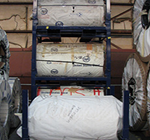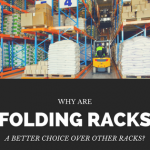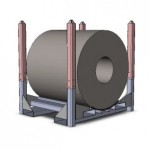Guide to Warehouse Rack Labeling System
The name ‘warehouse’ automatically brings a picture in your mind of storage area where raw materials, semi-finished, and finished goods are stored in an organized manner. When we say ‘organized’ manner, not every warehouse follows it intact. There are warehouses wherein you can find the goods that are carelessly kept in heaps in every nook and corner. Unlike the past, nowadays, most of warehouse managers take efforts to streamline the operation with efficacious storing of products in order to enhance supply chain efficiency, product visibility, and productivity. Several tips and tricks have been incorporated and one amongst the most important practices that today’s warehouses implement largely to ensure a fast and easy stock flow is using a warehouse rack label.
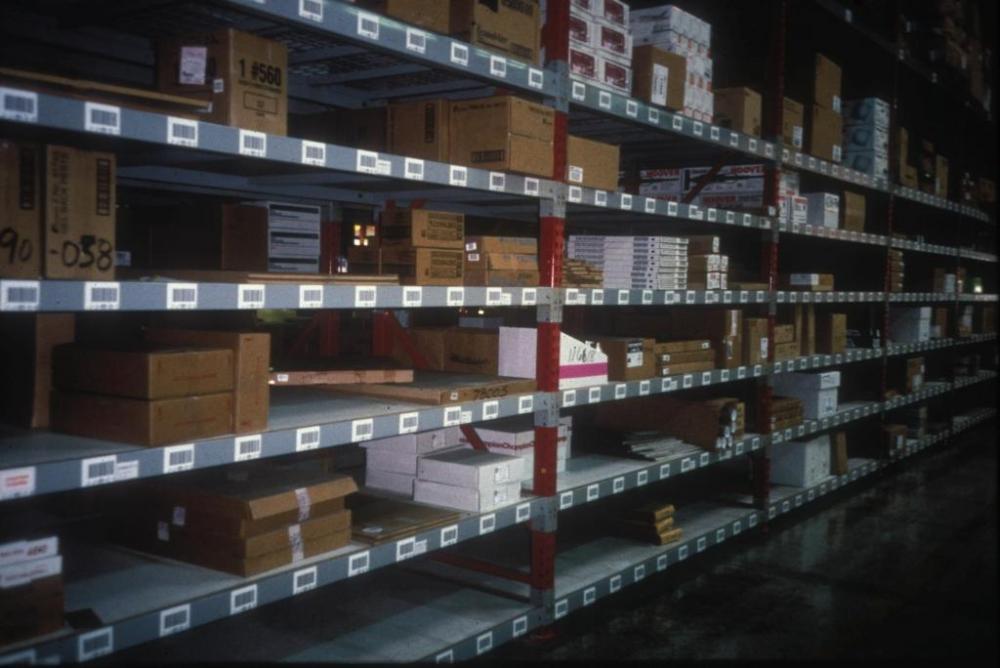
As mentioned earlier, a warehouse is a stocking place of a wide range of goods in racks. Hence, categorizing goods with proper rack labels is crucial. You can follow the below-mentioned steps to complete the labeling process quickly.
Step by Step on How to Label Warehouse Racks
- Identify the Rack Type: Warehouse racks are available in varied options. They can be manufactured in styles that you never imagined before. With such diverse styles available, it is not a good idea to blindly choose a standard label to fit the purpose. One size fits all never works when it comes to warehouse racks. For example, depending on the product storage demands, the racks can be lengthy that stretch from one side or long arms protruding from a metal framework. Hence, you must identify the rack type first and then proceed with selecting the labels.
- Involve Your Label Manufacturer Right from the Beginning: Most of warehouse managers commit the mistake of involving the label manufacturer half the way. This is not a good practice. Involve them right from the planning stage. Invite them to your facility or send them clear images of your facility and explain to them the layout and structure of the racks. Allow them to walk through the warehouse and see the rack arrangement. This helps the manufacturer to have a clear idea of the warehouse racks labels’ application area. This, in turn, allows them to produce the most suitable types of labels right for the facility.
- Get the Right Label as per the Application: Get the label considering the surfaces to which they are applied to. If the demand is for a warehouse rack label that can be easily removed and replaced to another surface, then go for choosing a magnetic label. On the other hand, if the racks are subjected to constant foot and forklift traffic, then choose the ones that are durable enough to stand up to wear and tear. Speak to the manufacturer and get an idea of the labeling options available. You may also understand the customization possibility so that you can get unique labels that rightly fit the application area.
Labeling warehouse racks with crucial information is extremely important for enhancing product visibility, ensuring safety, boosting productivity, and augmenting inventory management, among others. Racks that are unlabeled would be extremely difficult to locate, which in turn delays the inventory movement.
Some Innovative Warehouse Rack Labelling Ideas
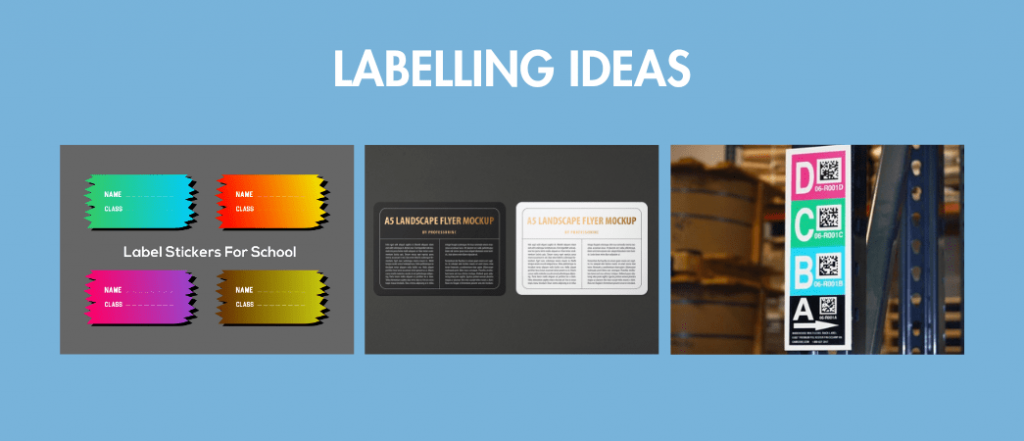
When it comes to increasing warehouse productivity, how you name your racks can make a big difference. Innovative warehouse rack labeling concepts improve organization while also streamlining inventory management, allowing workers to swiftly locate and handle commodities. Here are some innovative and effective labeling solutions to consider:
1. Color-Coded Labels
Color-coding is a simple yet powerful method to visually categorize different types of products or storage zones within the warehouse. For instance, you can assign different colors to each product category—such as red for hazardous materials, blue for electronics, and green for perishable goods. This visual cue helps workers quickly identify and locate items, reducing the time spent searching for specific products.
2. Magnetic Labels
Magnetic labels offer flexibility in dynamic warehouse environments where inventory and rack configurations frequently change. Unlike adhesive labels, magnetic labels can be easily removed and repositioned without leaving residue. This makes them ideal for racks that are often reconfigured or for temporary storage areas where labeling needs might change over time.
3. QR Code Labels
Incorporating technology into your warehouse rack labeling ideas can greatly enhance efficiency. QR code labels allow workers to scan the code using a smartphone or handheld device, instantly accessing detailed information about the item, such as its description, quantity, and storage location. This not only speeds up the inventory tracking process but also reduces the likelihood of human error in manual record-keeping.
4. Sequential Numbering System
A well-organized sequential numbering system is crucial for maintaining order in a large warehouse. Start by labeling racks from the bottom up, with the lowest level assigned as “01,” and continue numbering upward. This method ensures that when additional rows or racks are added, they can easily be integrated into the existing system without disrupting the overall flow.
5. Durable Materials
Warehouse environments can be harsh, with labels exposed to dust, moisture, and constant movement. Therefore, choosing durable materials for your labels is essential. Heavy-duty, laminated labels or labels made from materials resistant to wear and tear ensure longevity and maintain legibility over time. This is particularly important for racks located in high-traffic areas where labels might be subject to frequent handling or environmental stress.
6. Reflective Labels
For warehouses that operate around the clock or in low-light conditions, reflective labels can be a game-changer. These labels are designed to reflect light, making them highly visible even in dimly lit areas. This not only improves the speed and accuracy of locating items but also enhances safety by reducing the likelihood of errors during nighttime operations.
7. Custom-Printed Labels
Customization is key when it comes to labeling in a warehouse. Custom-printed labels that include specific information such as SKU numbers, product descriptions, and handling instructions can significantly reduce errors and increase efficiency. You can work with your label manufacturer to design labels that fit your exact needs, ensuring that all relevant information is clearly displayed and easily readable.
Warehouse Racks Labeling: More Steps to Follow
Although the steps listed above along with the ones listed below might look simple, they largely contribute to the proper labeling of warehouse racks in less time. Overlooking these steps leads to unnecessary confusion and delays.
- Ensure that the Racks are ready to Label: Sticking labels on a dusty surface is not advisable as it creates performance and durability issues. Hence, prior to labeling the rack, ensure to clean the surface in order to enhance the label’s adhesive value. Also, ensure that the information printed on the label goes in hand with the stored items. If labeling goes wrong, it will confuse the forklift operators or those who are manually moving the goods. This in turn leads to unnecessary delays in material movement.
- Label from Bottom to Up: It is always a good practice to stick the warehouse racks label from bottom to up. The bottom row must carry serial no 01, and when moving upwards it must be 02, 03, 04, and so on. This practice of numbering is beneficial when there are any future upgrades by adding rows to increase the height of the racks.
- Final Check: Since manual labor is involved in sticking labels to the rows of your huge racks, there might be chances to commit mistakes. Sticking the label upside down, placing a wrong label, or inappropriate application are among a few commonly occurring mistakes during the application. Hence it is always a good idea to keep a supervisor who checks the correctness of the label with respect to each row of the rack as and when they are applied. This certainly ensures the right application without any room for mistakes.
Few other points to consider while labeling warehouse racks include:
- Ensure that the writing on the labels is large enough for easy visibility.
- Choose bright colors like yellow, red, or black while printing information. This helps in easy readability even from long distances.
- Keep the information as simple as possible to read and understand even by low-level workers. Complicated jargons would confuse workers.
Warehouse racks label thus immensely contributes to pick the right materials from several rows of huge racks easily and quickly. As mentioned earlier, the racks which are properly labeled not only streamline the warehouse operation but also maximize the workers’ productivity. Planning to set up a warehouse with several racks in it? Then, get the durable racking solution from manufacturers like SPS Ideal Solutions and label them most efficaciously to recognize hundreds or thousands of stored goods without spending much time.
Frequently Asked Questions
What is the Importance of Warehouse Rack Labeling?
Warehouse rack labeling is critical for organizing and managing inventory effectively. Proper labeling ensures that products are easily recognized, resulting in increased productivity, faster inventory movement, and fewer errors while picking and arranging items. Workers in a well-labeled warehouse may easily locate commodities, increasing overall operational efficiency.
How Does Proper Labeling in a Warehouse Improve Safety?
Labeling at a warehouse is crucial to guaranteeing safety. Clear and visible labels allow workers to rapidly identify the contents of racks, lowering the likelihood of accidents or errors. Labels that carry hazard warnings or handling instructions help to create a safer working environment by instructing employees on how to handle items properly.
What Steps Should Be Taken for Effective Warehouse Rack Labeling?
To achieve effective warehouse rack labeling, follow these steps:
- Identify the type of rack and choose the appropriate label.
- Involve the label manufacturer early to customize the labels to your warehouse’s needs.
- Clean the racks before applying labels to ensure adhesion.
- Label from the bottom to the top of the rack for easy future expansion.
- Conduct a final check to ensure all labels are correctly applied and easily readable.
Why Should Labeling in a Warehouse be Simple and Clear?
Labeling in warehouses should be straightforward and obvious so that even entry-level employees can easily grasp the information. This avoids misunderstanding and speeds up tasks such as picking and refilling. Using bright colors and huge fonts improves the visibility and efficacy of the labels.
Related Posts:
- 5 Most Common Causes of Warehouse Catastrophes and Effective Ways to Prevent Them.
- 7 Essential Factors to Consider Before Warehouse Pallet Rack Installation.
- How to Design your Warehouse Racking Layout for Optimization?
- Tips for Rack Safety and Keeping OSHA Away
About The Author





